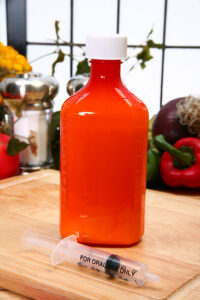
You have heard the expression that everyone complains about the weather but no one does anything about it. The same thing could be said of drug shortages. The FDA says that it is not responsible. And drug companies just shrug. Public health authorities are worried, however, that a shortage of the crucial antibiotic amoxicillin may become worse this winter. Amoxicillin shortages had already begun last spring. Powdered amoxicillin has been in short supply for at least a year, as you will read below.
Amoxicillin Shortages Threaten Children’s Health:
This is especially problematic for children who will soon be vulnerable to strep throats and ear infections that often accompany cold and flu season. Adults can take tablets or capsules, but children who can’t swallow pills need liquid medicine. Pharmacists mix the powder with water to treat infections in these youngsters.
Why Are We Seeing Amoxicillin Shortages?
The only major US manufacturer of amoxicillin is in Bristol, Tennessee. Competition with foreign-made manufacturers has made the entire process challenging.
During the COVID-19 pandemic, precautions against SARS-CoV-2 also reduced the spread of other respiratory infections. As a result, flu nearly disappeared, and people had fewer colds. Now, however, respiratory infections have come back.
One pathogen causing particular problems is Streptococcus, also known as strep throat. The most severe group A strep infections can become invasive and cause big trouble beyond the throat. Both toxic shock and necrotizing fasciitis result from invasive infections. Without adequate treatment, these complications could lead to hospitalization or death.
Treating Strep Infections with Amoxicillin:
The increase in group A strep has taken drug manufacturers by surprise. Consequently, there have been shortages of the antibiotic doctors usually prescribe for strep throat and other strep infections. That drug of choice is amoxicillin, and the shortages mostly affect pediatric formulations—the pink liquid. According to Dr. Erin Fox, medication policy researcher at the University of Utah, these shortages are due to a mismatch between what is available and what is needed. (You can watch an interview with her on Facebook or check out an interview she did with NPR.)
Switching Formulations:
Mostly, what pharmacies don’t have is the most popular dose, 400 mg/5 ml. Some have less concentrated dosages on hand. However, a parent treating a child’s infection will need to double-check the correct dose with the youngster’s health care provider. Giving the correct dose is essential in treating strep infections successfully.

Bottle of liquid oral antibiotic and dispenser in kitchen.
Amoxicillin Shortages Are Not Brand New:
Pharmacists know that amoxicillin shortages have been causing problems for months. Last spring, the FDA list of drug shortages implied that the amoxicillin supply would begin to recover in May and June. By fall, when the next seasonal surge in strep infections is expected, drugstores were supposed to have enough on hand. But that has not happened. As a result, lots of parents will need to call numerous pharmacies to fill an antibiotic prescription for a sick child this winter.

